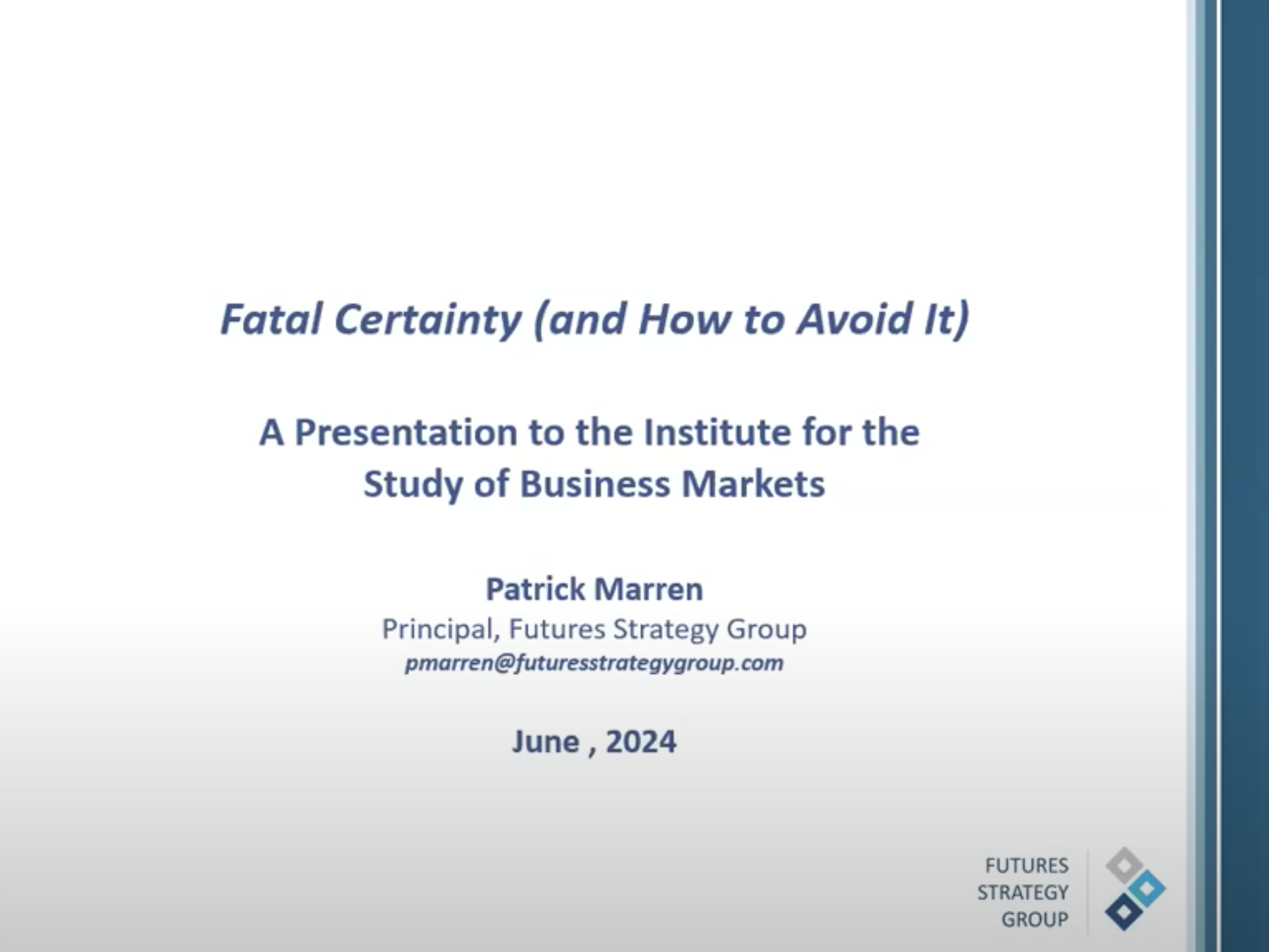August 24, 2023
All predictive systems involve a network of “if-then” statements, assumptions about the interrelationships between certain past or present, presumably knowable, realities, and the future outcomes that can safely be assumed once those inputs are entered into the model. The “model” can be a computer-based algorithm, or mathematical function, into which (measurable past or present) variables are entered, and out of which future eventualities emerge.
Or it can be a far less explicitly worked-out expert mental model, such as “Wars undertaken by the United States against Iraq will be cakewalks,” “Derivatives markets can be depended upon to regulate themselves,” or “Money spent, not impact achieved, is the relevant measure of success for reconstruction efforts in Afghanistan.”
The latter sort of mental model has lately been to blame for miscalculations with respect to China. A number of assumptions have long been held about why China was strong, and why it could be expected to continue to rise both economically and with respect to military power. The past week has not been kind to those assumptions. While India has successfully landed a spacecraft on the moon, China’s economic growth has apparently been slowing, and its efforts to expand its power in the Pacific have hit some snags.
For many decades, a swiftly rising population was thought to be a huge problem for developing nations. Costs of education and health care and food and water and infrastructure were all thought to be impediments to development, and likely to lead to further impoverishment and even civil strife and political instability.
Suddenly, however, as my colleague Gerard Smith has noted, this “if-then” correlation has been turned on its head. China is allegedly running into trouble, not because its population is growing beyond its means, but because it is NOT growing. This is alleged to be because the “support ratio” of workers to retirees is declining markedly, thanks to the 1960s-1970s-era “One Child Policy.” (The fact that population growth has slowed in many countries that have experienced economic development – Eastern Europe, Italy, Greece, etc. – but which did not have any sort of “One Child Policy,” is usually not mentioned in this connection.)
India is the counterpoint. India’s population has continued to grow, and its economic growth has also continued. This is the new consensus “expert mental model:” “Population growth is necessary for continued economic growth.” This despite the fact that India was the poster child for the doomsayers of the “Population Bomb” crowd of the 1960s and 1970s. It was “known” that population had to be controlled, or else India would be doomed. Sterilization programs and other government population control programs were pushed by foreign aid grandees, and pursued with vigor by Indira Gandhi’s government, until a backlash against them helped to vote her out of office.
As I have said elsewhere, it was taken as a given by those of us writing scenarios of the global future in the 1990s that India would lag Chinese growth, and that population was a large part of the reason. This was part of our “mental model” of how things worked in the world. Other aspects of our mental model included the “facts” that sub-Saharan Africa would also lag growth-wise, for similar reasons; and that Russia would always be a problem for the West. (We haven’t seen the latter assumption challenged recently, but that may simply mean we should keep our eyes open.)
When the vast majority of “experts” make a lot of the same assumptions about causes and effects, the result can be groupthink, and a general blindness to the possibility that such cause-effect assumptions could be faulty. Many expert models of the future vary just one or two variables, while assuming that the consensus expert opinions on all other variables can be relied upon. The result is a very blinkered, narrow view of the full range of plausible futures; essentially, linear extrapolation from current trends and beliefs, perhaps varied on one variable by 5 or 10%.
The alternative to this is rigorous imagination. Rigorous imagination begins by identifying – imagining – the full plausible range of large-scale future circumstances that have an effect on one’s world of work. It then works backward from these identified futures – without respect to probability – to create plausible stories for how these worlds might have arisen.
By its nature, rigorous imagination questions all high-leverage assumptions about causes and effects. It can simply posit that two circumstances that do not seem as though they could logically coexist – say, huge budget deficits and very low interest rates, or controlled population growth and collapsing GDP growth – and forces planners to take them seriously as possibilities.
Albert Einstein is supposed to have said, “The problems we face cannot be solved at the same level of thinking that created them.” He never said that, of course. Virtually none of the best quotes one reads on the Interwebs turn out to be authentic. But the sentiment is fairly valid. Rigorous imagination is a method for extracting us from our current “knowledge” of things that may or may not be true at all, and allowing us to imagine a world in which their opposites might suddenly turn out to be true.
Japan was thought to be about to take over the world in the 1980s. In 1990 it hit a “demographic cliff” much like China’s. China’s demographics are thought now to pose a mortal threat to its political stability. But Japan’s 1990s recession did not cause political chaos. We should not assume that China’s current alleged dilemma will cause it to recede as a growing power. Nor should we assume that India’s growth and stability are guaranteed. We should rigorously imagine the full range of plausible futures for both nations.



